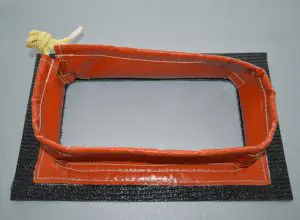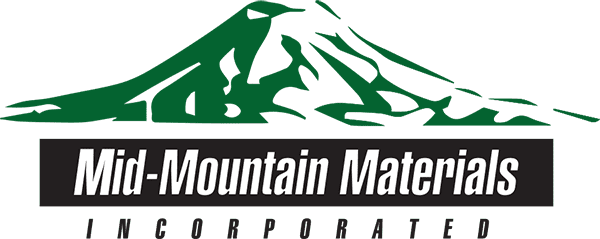In the pursuit of sustainability within the aluminum processing industry, reducing lifecycle emissions has become a paramount objective. The challenge of minimizing environmental impact while maintaining, or even enhancing, production efficiency has led to innovative approaches, including the use of thermal barriers. Thermal barriers, particularly in the context of aluminum reduction cells, not only extend the lifespan of essential components but also contribute significantly to the reduction of overall emissions.
The Basics of Aluminum Processing
Before we consider the application of thermal barriers, it is important to understand the procedure behind aluminum processing.
Alumina, also known as aluminum oxide, can be found in bauxite. After it is mined, it undergoes two processes:
The Bayer Process
Caustic soda is used to separate the bauxite from the pure alumina. It can also get rid of red mud.
The Hall Héroult Process
Created by Charles Martin Hall and Paul Héroult, this process is used to turn alumina into aluminum. After being dissolved in molten cryolite, it is heated to a melting point through carbon anodes and an electrical current. Through this, the oxygen is attracted to the carbon anodes, creating carbon dioxide. It leaves the liquid aluminum behind. The molten aluminum can then be set.
Through these refined processes, aluminum can be used in different applications, including being rolled into thin sheets. This material is known for its:
- Corrosion resistance
- Conductivity
- Ability to be easily recycled.
The Role of Thermal Barriers
Thermal barriers serve a dual purpose. Firstly, thermal barriers protect the structural integrity of reduction cells. This is through mitigating the effects of high temperatures and corrosive environments.
Secondly, and perhaps more crucially from an environmental standpoint, they reduce the energy required to maintain optimal processing temperatures. As a result, thermal barriers can lower emissions.
Energy Efficiency and Emissions
The direct correlation between energy efficiency and emissions reduction is well-established. By enhancing the thermal efficiency of reduction cells through barriers, like the THERMOSEAL® M44 Moldable and THERMOPAK® Cathode Bar Seal Boots, aluminum processors achieve significant energy savings. These savings translate directly into reduced carbon emissions, aligning with global efforts to combat climate change.

Extended Equipment Life and Resource Conservation
Extending the life of aluminum reduction cells through effective sealing and protection reduces the frequency of rebuilds and maintenance. It also lessens the demand for raw materials and the energy consumed in manufacturing new components. This approach embodies the principle of resource conservation, a key pillar of sustainable industrial practices.
Minimizing Operational Emissions
Operational emissions, including those from leakage and inefficient energy use, are significantly curtailed by advanced sealing solutions. Hermetic seal solutions ensure minimal gas escape, further contributing to the reduction of emissions. This aspect is crucial for aluminum processors aiming to meet stringent environmental regulations and lower their carbon footprint.
The Impact of Customizing Thermal Barriers
Customizing thermal barriers and sealing solutions to fit specific cell designs ensures optimal performance and maximizes the potential for emissions reduction. Tailoring thermal barriers and related solutions to the unique needs of each processing facility can potentially maximize energy efficiency and reduce emissions.
Innovation and Continuous Improvement
The continuous pursuit of innovation is vital for further advancements in emissions reduction. Sustained research and development ensures that new materials and solutions are regularly introduced, offering even greater efficiencies and lower emissions. This ongoing innovation cycle is essential for keeping pace with evolving environmental standards and expectations.
Collaboration for Sustainability
The journey towards reduced lifecycle emissions is not one that aluminum processors can undertake alone. By partnering with experts in thermal barrier technologies, processors can access the latest advancements and insights. This will ensure their operations are at the forefront of sustainability.
The Bigger Picture of Thermal Barriers
Beyond the immediate operational benefits, using thermal barriers for emissions reduction reflects a broader commitment to environmental stewardship. It demonstrates an understanding that sustainable practices are not only beneficial for the planet but also contribute to long-term operational efficiency and cost-effectiveness.
Using thermal barriers in aluminum processing is a clear example of how innovative materials and technologies can contribute to environmental sustainability. The industry can achieve significant emissions reductions through thermal barriers and their related tools, as well as:
- Improved energy efficiency
- Extended equipment lifespans
- Reduced operational emissions.
We, Mid-Mountain Materials, Inc. stand at the forefront of this movement. Our thermal seal solutions and thermal barriers meet the technical demands of aluminum processing and align with the urgent need for emissions reduction. As the industry continues to evolve, the role of thermal barriers in achieving sustainability goals will undoubtedly grow, highlighting the importance of continued innovation and collaboration.

